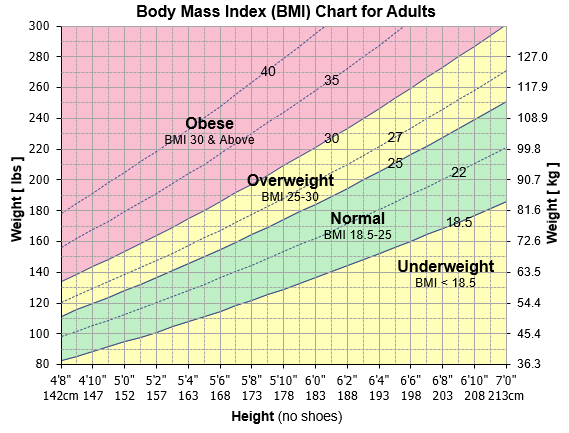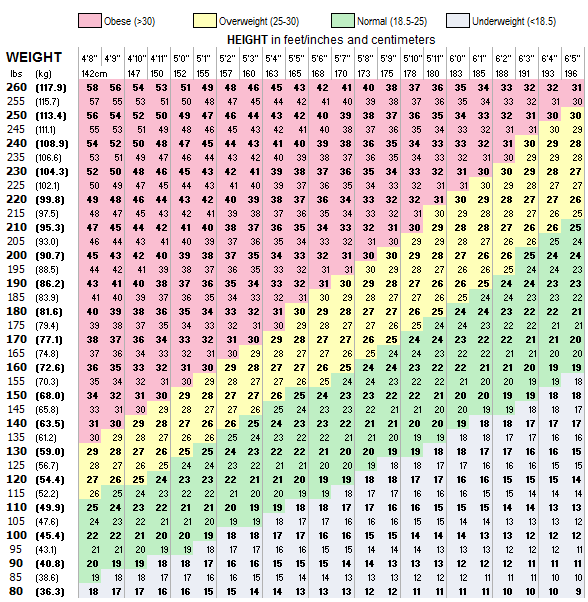Body mass index (BMI) is a measure of body fat based on your weight in relation to your height, and applies to most adult men and women aged 20 and over. For children aged 2 and over, BMI percentile is the best assessment of body fat.
Contents of this article:
You will also see introductions at the end of some sections to any recent developments that have been covered by Medical News Today's news stories. Also, look out for links to information about related conditions.
Fast facts on BMI
Here are some key points about BMI. More detail and supporting information is in the main article.
- Body mass index (BMI) is a measure of relative size based on the mass and height of an individual.
- The Quetelet Index was devised by Adolphe Quetelet, a Belgian mathematician, astronomer and statistician, in 1832. It was later termed "body mass index" in 1972 by Ancel Keys.
- BMI is a simple, inexpensive and noninvasive surrogate measure of body fat.
- Factors such as age, sex, ethnicity and muscle mass are not accounted for in BMI.
- For adults 20 years and older, BMI is interpreted by using standard weight status categories that are the same for all ages, and for both men and women.
- For children and adolescents between 2-20 years old, BMI is interpreted relative to a child's age and sex.
- BMI is a reasonable indicator of body fat for both adults and children.
- Because BMI does not measure body fat directly, it should not be used as a diagnostic tool.
- BMI should be used as a measure to track weight status in populations and as a screening tool to identify potential weight problems in individuals.
- Other measures of body fat, such as skinfold thicknesses, bioelectrical impedance, underwater weighing and dual energy X-ray absorption, maybe more accurate than BMI.
What is BMI?
BMI is used as a screening tool to indicate whether a person is underweight, overweight, obese or a healthy weight for their height.
If a person's BMI is out of the healthy BMI range, their health risks may increase significantly.
BMI values are age-independent and the same for both sexes. However, BMI may not correspond to the same degree of fatness in different populations due to different body proportions.
The health risks associated with an increasing BMI are continuous, and the interpretation of BMI grading in relation to risk may differ for different populations.
There are two ways to check your BMI:
- Use our BMI calculators
- Use the BMI chart. First, find your height in the left-hand column. Then, follow it over until you find your weight along the top bar. The number in the center box between the two is your BMI.
Benefits of maintaining a healthy weight
The benefits of maintaining a healthy weight include:
- Fewer joint and muscle pains
- Increased energy and ability to join in more activities
- Improved regulation of bodily fluids and blood pressure
- Reduced burden on the heart and circulatory system
- Improved sleep patterns
- Reductions in blood triglycerides, blood glucose, and risk of developing type 2 diabetes
- Reduced risk for heart disease and certain cancers.
Excess weight increases how hard the heart has to work, it also raises blood pressure, blood cholesterol and triglyceride levels and lowers HDL (good) cholesterol levels. Excess weight can make a person more likely to develop diabetes.
Lifestyle changes that help you maintain a 3-5% weight loss are likely to result in clinically meaningful improvements in blood glucose, triglycerides and risk of developing type 2 diabetes. Greater weight loss can also help reduce blood pressure and improve blood cholesterol.
How is BMI used?
BMI is not accurate enough to be used as a diagnostic tool. However, it is used as a screening tool to identify potential weight problems in adults.
A person may have a high BMI, yet to determine if this excess weight is a health risk, a health care provider would need to complete further assessments such as:
- Skinfold thickness measurements
- Evaluations of diet
- Physical activity
- Family history
- Other appropriate health screenings.

